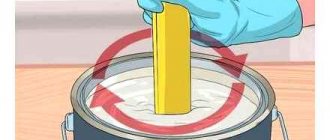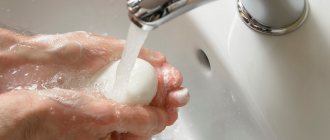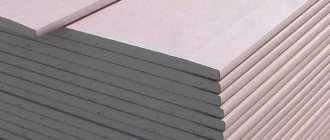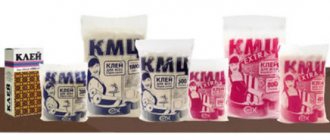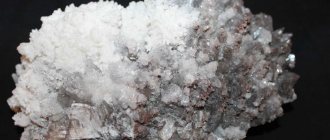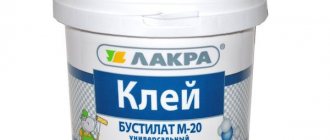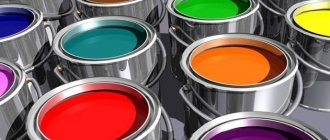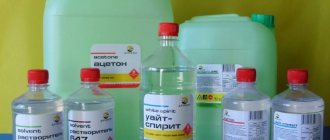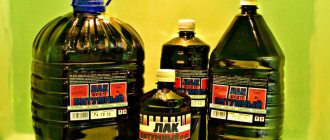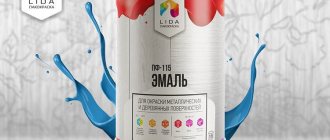During construction and repairs, situations often arise when paint or putty needs to be thinned a little. For this purpose, special compounds are used that do not change the qualities of the source material. White spirit is considered one of the most popular and inexpensive.
What is white spirit?
The composition is one of the types of organic solvents that are obtained through direct oil refining. The name literally translates as “white spirit”. White spirit is a composition that is an oily liquid, classified as a substance with a low level of danger, but if the vapors are inhaled for a long time, symptoms of poisoning may appear. In simple words, this is one of the varieties of light fractions of kerosene or dehydrated purified gasoline. As a result of containing a large amount of volatile substances, it cannot be used as a fuel.
White spirit - composition
The second name of the substance is “Nefras-C4”. It belongs to the group of mixed solvents, which include hydrocarbons of all classes in an amount of 5% of the total mass. The substance does not have any specific formula, because it is made by distillation, and it is impossible to say exactly what the composition will be, because everything depends on the source raw material. There is a type of solvent gasoline that has virtually no odor, this is obtained due to additional purification.
Surfaces and degreasing rules
Solvents contain several substances at once, or only one. In the production of such materials, it is permissible to use gaseous and solid, liquid forms of components. Liquid solvents have become more widespread.
There are a lot of factors that need to be taken into account to make the right choice.
Some of the characteristics are determined by the quality of the components and the manufacturing process. Example:
- The appearance of open fire;
- Chemical additives in a certain quantity;
- Acidity;
- Toxicity, and so on.
Solvents also differ in their range of applications:
- Medicine;
- Conducting laboratory research;
- Shoes;
- Manufacturing of leather goods;
- Chemical industry;
- Machine production;
- Instrumentation.
White spirit - technical characteristics
The main indicators of the substance according to GOST are as follows:
- permissible density of white spirit at +20°C – 0.790 g/cm³;
- boiling point – +160°C;
- 10% is distilled at a temperature of – +170°C;
- 90% – +195°С;
- 200% – +98°С;
- residue after distillation – 6%;
- flash point – +33°С;
- volatility for xylene – 3-4.5;
- mass fraction of aromatic hydrocarbons – 16%;
- sulfur – 0.025%;
- White spirit hazard class – 4.
Additional information about storage
The materials are highly flammable. The main thing is that children cannot access the room, while maintaining an adequate level of ventilation. Naturally, there should be no open sources of fire, as well as direct sunlight. If you use containers and canisters for storage, it is important that each one is tightly closed. White spirit is known for its low freezing point. Therefore, even rooms without heating are suitable for storage.
White spirit and kerosene - what's the difference?
These two compounds perform the same functions. Solvent white spirit and kerosene are mixed benzenes that obtain their properties after direct distillation of low-sulfur oil. Both compositions are used in everyday life and production. The fundamental differences between these materials are volatility and viscosity. Kerosene is slightly volatile when compared with the “white spirit”. After use, a thin oil film is formed on the surface. To treat the surface of, for example, a car, it is recommended to use white spirit, which has clear advantages over kerosene.
Compound
White spirit contains various hydrocarbons that are obtained as a result of refining petroleum products. Moreover, aliphatic compounds predominate.
Due to the fact that the solvent is obtained during the distillation and filtration of oil, its exact composition is difficult to determine. To monitor the quality and basic properties of white spirit, laboratory tests control some parameters of the liquid:
- the solution should contain no more than 0.025% sulfur;
- the environment is only neutral, the presence of alkali and acid is unacceptable;
- aromatic hydrogens – up to 16%;
- Precipitation and the presence of mechanical impurities are unacceptable.
White spirit is sold in plastic and glass bottles. Its average cost cannot exceed 60-80 rubles per 1 liter; the price largely depends on the manufacturer’s brand.
White spirit solvent is offered by domestic and foreign manufacturers. These are two different products - the foreign solution is carefully purified from harmful aromatic hydrocarbons that are harmful to human health and the environment. The filtration process is complex and expensive, which affects the price of the product. But we note that with such cleaning the solvent properties of white spirit are significantly reduced. Accordingly, its effectiveness is called into question. For this reason, the domestic product is in greatest demand.
What is white spirit used for?
Characteristics such as low toxicity, fire hazard, cost-effectiveness and ease of use lead to widespread use in various fields. The main area of use of the product is the chemical industry. The purpose of white spirit is as a solvent in the manufacture of varnishes, paints, primers, enamels and other products. In addition, it is used in the following areas:
- Construction
. Reducing viscosity and diluting paints, varnishes and drying oils. This helps save paint without compromising the quality of the coating. In addition, white spirit is applied to degrease surfaces. - Automotive industry or car service
. The surfaces of various parts are degreased, components are washed, and mastics are prepared. - Leather industry
. Used to dilute compositions for tanning leather and imparting certain qualities to them. - Pharmaceutical industry
. The production process of certain medications. - At home
. During repairs, paints are diluted, and during maintenance, old grease is removed. In laundries it is used to remove various stains.
Does white spirit degrease or not?
The answer to this question is yes. Any metal products can be processed, especially those that are being prepared for painting. Having figured out whether it is possible to degrease a material with white spirit, you need to know that in addition to this, its processing does the following:
- removes all contaminants obtained during operation;
- remove traces of liquids with which the material has come into contact.
Having studied white spirit - what it is, it is clear that the effect of such operations is the appearance of small stains; if any coatings are then applied, this is not significant. In addition, white spirit is used for processing plastic and glass. The substance has a gentle effect on almost all objects. This is a suitable option for treating any surface before gluing.
Can paint be thinned with white spirit?
Initially, this composition was produced exclusively for these purposes. It is now very popular due to its availability and wide range of uses. When looking for information on how to dilute paint with white spirit, you need to know that the composition is suitable for oil and enamel types, as well as various paint and varnish products. Depending on the amount of solvent, it can be used not only to dilute liquid paint, but also to dissolve dried paint without damaging the surface.
Application area
The popular thinner can be used for a variety of purposes. The main area of use is working with chemicals on an industrial scale. The composition is intended to dilute paints, varnish products, primer solutions, enamels and other similar options. The use of white spirit is also in demand in the following works:
- In the construction field, they are used to dissolve paint and varnish materials; such an effect not only solves the problem of the old hardened composition, but also helps to reduce the consumption of materials. This intervention does not harm the resulting painting result. Used to degrease substrates, otherwise greasy stains will affect the degree of adhesion;
- In the automotive industry, also in auto repair shops, it serves as a degreaser for various bases on cars, components are washed with the composition, and used in the preparation of mastic solutions;
- When working with leather. It is added to solutions that are used for tanning leather to obtain the necessary properties;
- Pharmaceuticals, a necessary product for the preparation of certain types of medications;
- Household needs and repair work may require the need to degrease various items, dilute paints, or need to clean out old grease. Laundry work may require application to remove stains.
Used to degrease substrates, otherwise greasy stains will affect the degree of adhesion.
How to use white spirit?
Once purchased, the composition does not require any preparation before use. Knowing that white spirit is a composition for solving many problems, you need to know how to use it correctly. To do this you need to follow a number of simple steps:
- open the lid and pour in a small amount of white spirit;
- stir well until a homogeneous mass is obtained;
- repeat all steps until the desired consistency is achieved.
One of the important parts of use is human safety rules when working with this substance. Precautions include the following:
- The use of protective clothing and a respirator is mandatory.
- It is necessary to ventilate the room, because a high concentration of vapors can affect the nervous system.
- Avoid exposure to direct sunlight, which can lead to fire.
- Close the lid tightly after use and store in a dark place.
- Prohibited use near open flames.
How to get rid of the smell of white spirit?
Despite the large number of positive aspects of use, there is one drawback - an unpleasant aroma that remains on all surfaces with which the composition came into contact. If it is not possible to purchase odorless white spirit, you need to know how to get rid of it. To get the desired result, you need to know the following methods:
- Things are soaked in clean water for 30 minutes. Then change the water and hand wash with laundry soap and washing powder. Rinse twice: in vinegar and soda, and then in clean water.
- After contact with skin, you need to shower and rub your body with antibacterial soap. The area can be wiped with a vinegar solution (1:1) or lemon zest.
- The smell of white spirit is removed from the car interior using coffee beans, soda or starch. Treat the surface with any method, remove the residue with a vacuum cleaner.
- You can refresh the room by hanging wet towels, ventilating the room, placing a container of water and mint, or turning on the aroma lamp.
- You can clean furniture or carpet with soapy water or coffee beans.
Storage and use
White spirit is a flammable substance (category 2), auto-ignition temperature is 270°C. Vapors mixed with air create an explosive mixture. Given these features, pay special attention to the storage location. This solvent should be kept in a dark, cool, ventilated room, out of reach of sunlight. There should be no heat sources nearby, including heating devices. The shelf life is usually indicated on the can, but it is not important. If there is liquid inside and not jelly, it can be used.
Packaged in plastic bottles and canisters
When opening and operating, the following requirements must be met:
- Work outside or in a well-ventilated area.
- It is unacceptable to be near open flames or sources of sparks.
- When opening the container and mixing the compositions, do not use devices that can create a spark.
- White spirit begins to evaporate at a temperature of +20°C. To ensure quick drying of paint, mastics, putty, you need to work in the warm season or in a warm room.
- If solvent is spilled in a room, open windows and doors, collect as much as possible, and remove it from the room. Wipe the area where white spirit was spilled with a rag. To remove grease stains, you can use detergents that dissolve fats. If you spill it on the street, fill the puddle with sand, which you then take out.
- In case of fire, do not extinguish it with water. Use foam, sand, powder, felt.
According to the degree of impact on the human body, it is classified as a substance with low danger. In case of contact with skin, it can cause burning, dermatitis and allergic eczema. Therefore, it is better to avoid even short contact. The best thing you can do is wear gloves. If you have to work indoors for a long time, it makes sense to wear a respirator.
What to replace white spirit with?
Given the great popularity of the composition, there is no need to be upset when it is not at hand at the right time. You can replace white spirit degreaser with the following substances:
- turpentine;
- gasoline;
- solvent P4;
- FAS-104;
- technical gasoline;
- solvent.
Currently, you can find a wide variety of solvents on sale, each with its own advantages and disadvantages, as well as application features and cost. There is no single alternative to replacing white spirit; in each individual case, you need to select a product based on the needs and specifics of using the composition.
About existing analogues
If white spirit is not available, you can use similar substances that can replace it.
The main thing is that the properties of such compositions are approximately the same:
- Solvents grades P4, 650, 649, 646, 647;
- Acetone;
- Solvent;
- Turpentine;
- Petrol.
Analogues are practically no different from white spirit, except that in some properties they will be slightly worse. It is better to leave them as a last resort, when the most basic material is really gone.
White spirit poisoning
Any solvent is toxic to the human body, therefore the use of white spirit is allowed only after using personal protective equipment for the skin and mucous membranes. The following toxic effects of the composition have been established:
- damage to the central nervous system;
- damage to the structure of the circulatory system;
- toxic liver damage;
- severe poisoning of kidney cells.
Similar problems can arise as a result of the following situations:
- lack of personal protective equipment;
- technical process failure;
- poor room ventilation;
- failure to comply with safety regulations;
- damage to the container in which white spirit is stored;
- accidental use.
If you detect the negative effects of white spirit, you should immediately go to the hospital. Poisoning is expressed:
- chest pain;
- pain in the stomach;
- nausea;
- vomiting blood.
Features of domestic and foreign analogues
[rek_custom4] According to technical regulations, our and foreign solvents represent the same product. In fact, there are a number of differences:
- For foreign companies, the product goes through many stages of purification from impurities.
- Unlike our solvents, foreign ones have practically no smell. Therefore, “foreigners” are less toxic.
- Our manufacturers do not always use a full cleaning cycle and therefore poisoning with domestically produced white spirit is more likely.
- Domestic analogues, due to incomplete cleaning, have a much higher ability to clean and degrease.
- The fire safety of our White spirit is better.
Based on the above, the conclusion suggests itself that our solvent is a high-quality product manufactured according to the standard. In addition, it is cheaper than imported products, and copes with its responsibilities in exactly the same way. The main thing when working with it is to take precautions.
Safety precautions when working with solvents
Due to the high fire hazard, it is prohibited to use solvent near an open fire; it is better to carry out work away from the source of a possible fire, which could even be an electrical appliance or a cable line passing nearby. To prevent the possibility of hazardous discharges, equipment located or exposed to the product must be protected from static electricity and be grounded.
Persons who have reached the age of 18, who have undergone a medical examination, training, introductory safety briefing and who have a special certificate may be allowed to work with solvents. Retraining of personnel is carried out at least once every three months. If it gets on the skin, it causes dryness, as well as dermatitis and ulcers. If it gets in, the affected area of the epidermis should simply be washed with a large volume of running water, preferably with soap.
When carrying out work, workers are required to use the following personal protective equipment: a suit (jacket and pants) made of thick cotton fabric, mittens or two-layer latex gloves, leather boots, a respirator. Working clothes must be sanitized at least once a week.
The volume of prepared solvent placed at the workplace should be no more than for one shift. The room in which work is carried out must have sufficient ventilation. In the event of a fire resulting from the ignition of white spirit, use fire extinguishers with carbon dioxide or foam. It is prohibited to use water for extinguishing!
In order for this solvent to comply with the given technical characteristics, it is necessary to strictly adhere to the standards of its storage conditions. Only constant compliance with safety measures will prevent the possible occurrence of a fire or explosion. Read also: how to remove glue from a sticker from plastic and how to remove a sticker from glass using this composition.
The safety data sheet for any hazardous chemical product, including a solvent such as white spirit, must contain:
- data on the chemical composition, components;
- emergency first aid measures;
- fire precautions;
- personal protection;
- physical and chemical properties;
- toxicological information;
- transportation information.
Security measures
White spirit is not a highly toxic product.
Certain safety standards must be observed:
- When working with solvents, you need to use special clothing that can protect your body from contact with chemicals. You also need to remember to use a respirator.
- You need to work in an open or ventilated room.
- Direct rays of the sun should not fall on the container with the chemical, otherwise a fire may occur.
- You should not work with white spirit near sources of artificial lighting, which are considered a source of fire.
- When opening containers, do not use objects that could create a spark.
- Do not use pumps (compressed air) to drain or pump the solvent.
- If a fire occurs, you can use sand or foam to extinguish the fire. Water is not used for extinguishing.
The solvent is classified as hazard category 4. Accordingly, the liquid must be handled very carefully and carefully, observing existing safety standards.
Applications: degreasing, diluting, cleaning
Nefras has a number of features. The advantages of this solvent:
- the pungent odor goes away quickly (in particular, this applies to Tikkurila brand products);
- inexpensive;
- relatively low consumption compared to other solvents.
Application of the substance:
- production of paints and varnishes;
- production of various mastics, polishing pastes and drying oils, materials for priming;
- cleaning of various equipment parts in industry;
- degreasing of various surfaces, mainly metal;
- fighting rust and removing bitumen stains from the body;
- production of antibacterial substances for wood;
- removes paraffin from the surface and fibers of fabric.
This list is not exhaustive. It is expanding with the development of various technologies.
Expert opinion
Ilya Vyacheslavovich
Consultant for body repair at krasymavto.ru
Ask a Question
Disadvantages of the solvent: explosive and flammable when accumulated in the room where it is used, the presence of an unpleasant odor and some toxicity at high concentrations.
Characteristics of solvent P646
For many decades they have been used to dilute paint and varnish products. At the moment, these thinning compositions have found their use not only for diluting paintwork materials, but also for cleaning tools, removing stains, degreasing and much more.
The most popular is multicomponent solvent 646. P646 is produced. This substance is produced using substances such as toluene, ethanol, as well as acetone and some other components. Solvent 646 is used at almost all stages of finishing work, the consumption depends on what kind of work needs to be done.
Its main advantages are that it has unique properties in terms of physical and chemical indicators. With its help, you can save a lot on the solvent consumption rate of 646 per 1 m2.
Peculiarities
This liquid is used in the process of mixing various paints and varnishes. In addition, the solvent is used for diluting alkyd, varnish and oil paints. White spirit also performs other functions, for example, it perfectly dissolves various oils and fats. Such solvents are used for cleaning electric motors.
This solvent has a very strong smell, which is somewhat similar to the smell of kerosene. Even at a decent distance this specific aroma can be felt. White spirit emits very toxic fumes that can cause intoxication in the human body.
Finding and buying white spirit today is not difficult. The construction market offers a wide range of products from foreign and domestic manufacturers.
Kerosene, its varieties and applications
Kerosene is obtained by rectification or direct distillation of oil, possibly followed by hydrotreating. Chemically, it is a flammable mixture of liquid hydrocarbons with a boiling point of 150-200 degrees. Kerosene is a transparent, colorless (possibly slightly yellowish), slightly oily liquid to the touch. The most commonly used types of kerosene include aviation, technical and lighting.
Despite the difference in names, all of them can be used as a solvent; for example, aviation kerosene TS-1 is an excellent solvent (even after the expiration date, this substance is successfully used to remove contaminants from equipment, car parts and other mechanisms).
Dearomatized by deep hydrogenation, technical kerosene containing no more than 7% aromatic hydrocarbons is used as a solvent for the production of PVC by polymerization in solution.
Properties and characteristics
As already mentioned, the characteristics and properties of white spirit are standardized: GOST 3134-78. But finding a solvent made in accordance with GOST on sale is very difficult. Most of them are produced according to specifications, which set out their own rules. In particular, the maximum content of volatile substances changes.
White spirit called Nefras is produced according to TU 0251-009-51758336-2008
For example, Nefras-S4-155/205 is widely used. Its quality characteristics are lower than those required by GOST. But it is produced according to specifications, which does not contradict the law. The list of GOST requirements is given in the table.
Characteristics of white spirit according to GOST
Pay attention to such characteristics as flash point. According to GOST it is +33°C. This means that when heated to this temperature, a fire is possible. So you need to be very careful when using and storing. There is one more feature - the liquid accumulates a static charge. Therefore, the container is plastic or glass.
